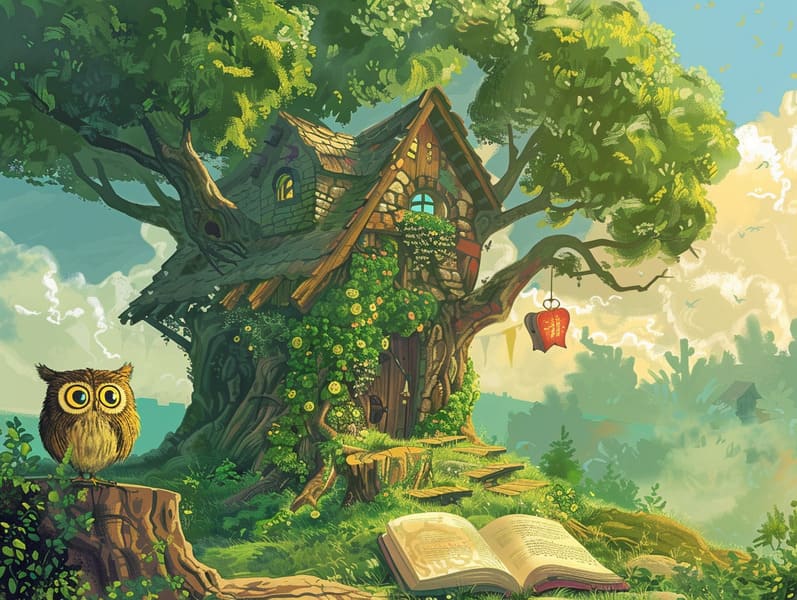
Historical fairy tales have ancient roots. These narratives have been transmitted from one generation to the next far before they were ever transcribed. They arose from a variety of cultures, including Asian traditions. They were initially conveyed among elders, often carrying themes and messages relevant to the societal norms and beliefs of the time.
The Brothers Grimm, Jacob and Wilhelm, were among the first to collect many of these beloved fairy tales. Their anthology, "Grimm's Fables," included classics like "The Story of Cinderella," "The Story of Hansel and Gretel," and "Schneewittchen," which have since become essentials in the world of children's fairy tales. Similarly, Hans Andersen's delightful stories, such as "The Little Mermaid," and "The Duckling's Story," have gained the love worldwide, guaranteeing their place in the pantheon of beloved fairy tales.
Despite their age, fairy tales remain as applicable as ever, especially as kids' bedtime tales. These fantastical tales are now available in many formats, including beautifully illustrated books, captivating animations, and digital storybooks.
Their persistent charm can be ascribed to several fascinating points:
Valuable Lessons: Traditional fairy tales often convey important moral lessons. Narratives like "The Wolf and the Liar" teach the merit of truth, while "The Race of the Tortoise and the Hare" show the qualities of tenacity and unpretentiousness. These stories offer kids clear distinctions between truth and falsehood, building their moral compass in a subtle yet meaningful way.
Kindness and Comprehension: Timeless fairy tales frequently portray beings facing tests and troubles, motivating kids to comprehend with their struggles and celebrate their triumphs. For instance, "The Tale of Beauty and the Beast" illustrates the necessity of appreciating inner worth to understand the inner being of a individual, fostering perception and understanding.
Cultural Recognition: Many ancient fairy tales are deeply embedded in the cultural contexts from which they bloomed. Delving into these narratives can provide fascinating glimpses into different backgrounds, developing a sense of world awareness and comprehension.
Imagination and Innovation: The fanciful elements in traditional fairy tales—talking animals—revitalize children’s creative thoughts. These stories bring readers to supernatural realms, enlivening fantasy dreams and a sense of fascination that persists a lifetime.
Ancient fairy tales are not only captivating but also educational. They work as fascinating tools in developing various thinking and feeling skills in the young. When ancient fairy tales are spoken, they advance language development by introducing new word meanings and complicated sentence structures. This practice also enhances listening abilities and concentration, as little ones stay focused, expectant to see what happens next.
Furthermore, discussing the themes and characters of fairy tales can advance thinking skills and evaluative skills. Young readers are guided to spot patterns, guess what will happen, and grasp cause and effect. These deliberations also promote young ones communicate their thoughts and feelings, advancing their emotional intelligence.
In today’s high-tech era, the accessibility of digital fairy tales has made these tales more acquirable than ever. Online resources and apps feature vast collections of old fairy tales that can be accessed or listened via anytime, anywhere. Fairy tales told out loud are particularly liked, offering an entertaining method for young readers to be a part of these charming stories. Read-aloud stories and read-aloud videos bring characters and settings to life, often supported by spellbinding sound effects and musical scores that amplify the storytelling experience.
The unending appeal of traditional fairy tales lies in their ability to alter to new eras while preserving their core values. Contemporary modernizations of these narratives often show more multicultural protagonists and modern settings, making them relatable to today’s audience. However, the basic principles of valor, understanding, and justice remain unchanged, continuing to strike a chord with readers of all ages.
Timeless fairy tales also offer a sense of security and comprehensibility. They render a ordered narrative with a transparent beginning, middle, and end, often wrapping up with the finalization of conflicts and the triumph of righteousness over wickedness. This assuredness can be solacing for little ones, gifting a sense of assuredness in an shifting world.
Traditional fairy tales continue to mesmerize and guide new generations, maintaining their radiance and impact in modern society. As children's night stories, they yield a perfect blend of enchantment and education, developing moral values, empathy, and creativity. The proliferation of free fairy tales online and the prevalence of fairy tales narrated assure that these ancient fairy tales remain reachable to new generations.
By maintaining and relating these stories, we continue to laud the rich tapestry of folklore and cultural heritage. Whether you are viewing a artistically illustrated book, browsing a electronic library, or listening on an audio story, the magic of traditional fairy tales is always within reach. These tales show us of the persistent influence of storytelling and its ability to bind us across eras and regions.
Regardless if you are reading a beautifully illustrated book, delving into a virtual collection, or listening through an narrated book, the elegance of classic fairy tales is always within reach.
These fairy tales highlight of the steadfast spell of stories and find it here its ability to unite us across generations and cultures, making a tie that fascinates and enlightens alike.